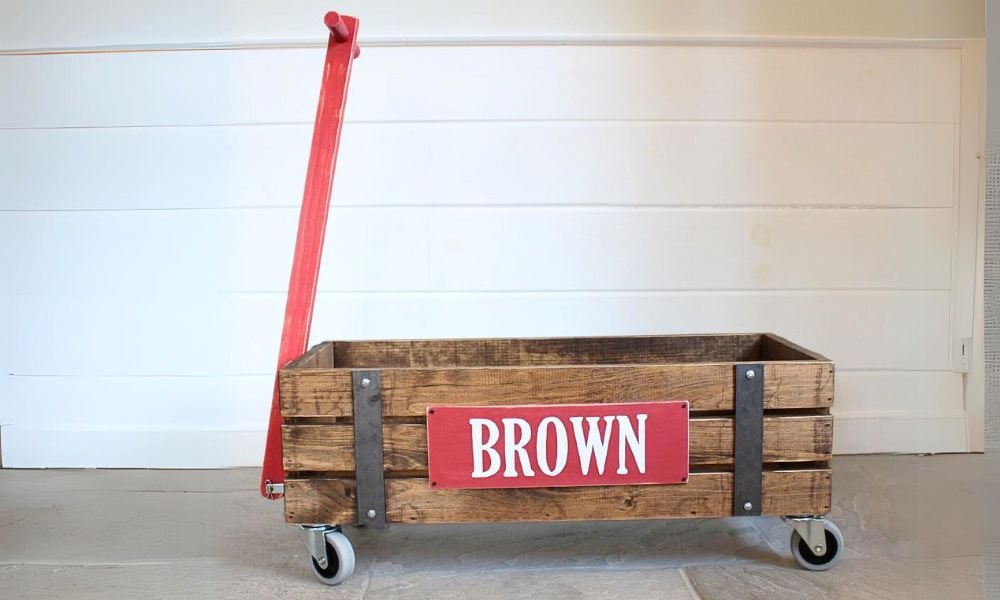
Make your own vintage wood wagon - Free plans and detailed instruction from Ana-White.com
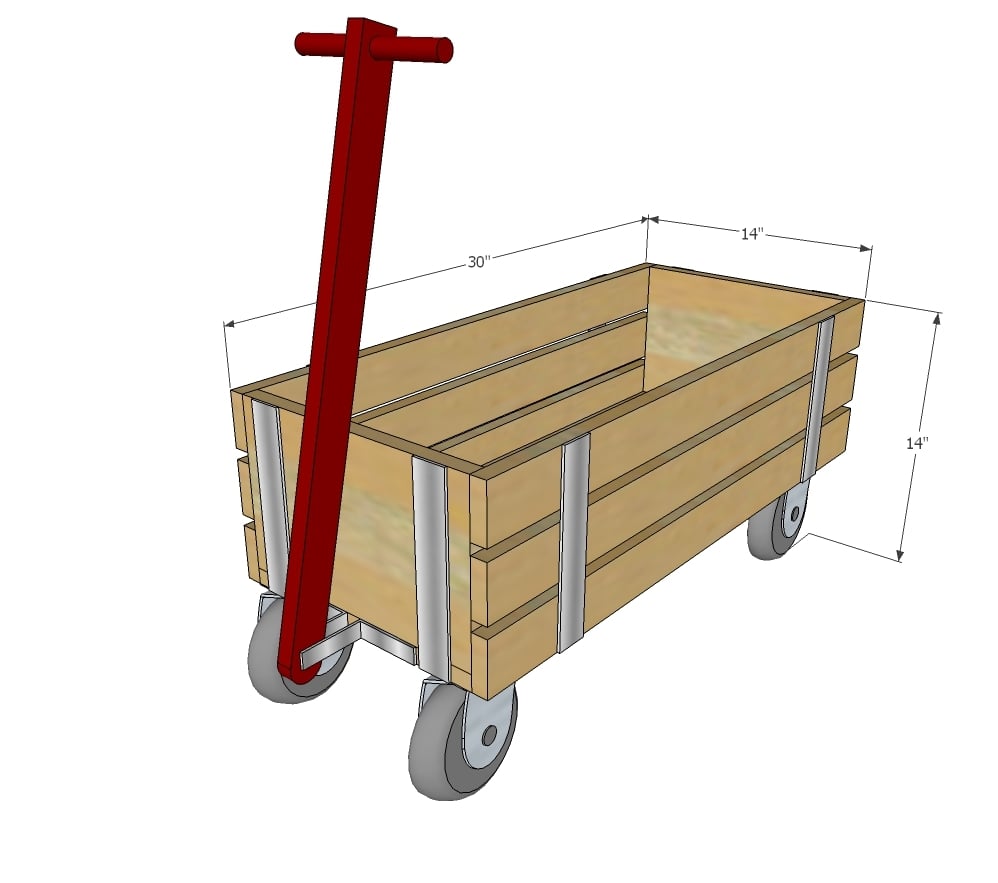
Preparation
1 - 1x12 @ 4 feet long
2 - 1x3 @ 8 feet long
1 - 1x2 @ 30"
1 - 1" dowel @ 7"
72" of decorative metal or wood lath
4 - 4" caster wheels (two swivel, two fixed) non-marking wheels
2 - L brackets (3")
1 - shear pin
Screws for attaching caster wheels and metal pieces (3/4" long)
1 - 1x12 @ 28-1/2" (bottom)
2 - 1x12 @ 8-1/2" (front/back)
6 - 1x3 @ 30" (Sides)
8 - lath or metal pieces @ 8-1/2" (decorative strips)
1 - 1x2 @ 30" (handle)
1 - 1" dowel @ 7" long
Please read through the entire plan and all comments before beginning this project. It is also advisable to review the Getting Started Section. Take all necessary precautions to build safely and smartly. Work on a clean level surface, free of imperfections or debris. Always use straight boards. Check for square after each step. Always predrill holes before attaching with screws. Use glue with finish nails for a stronger hold. Wipe excess glue off bare wood for stained projects, as dried glue will not take stain. Be safe, have fun, and ask for help if you need it. Good luck!
Instructions
Step 1
Step 2
Step 3
Add decorative metal pieces or wood lath using 3/4" screws. You will need to predrill holes in the metal.
For more details on Jaime's decorative metal pieces, please read this post.
Step 4
It is always recommended to apply a test coat on a hidden area or scrap piece to ensure color evenness and adhesion. Use primer or wood conditioner as needed.




















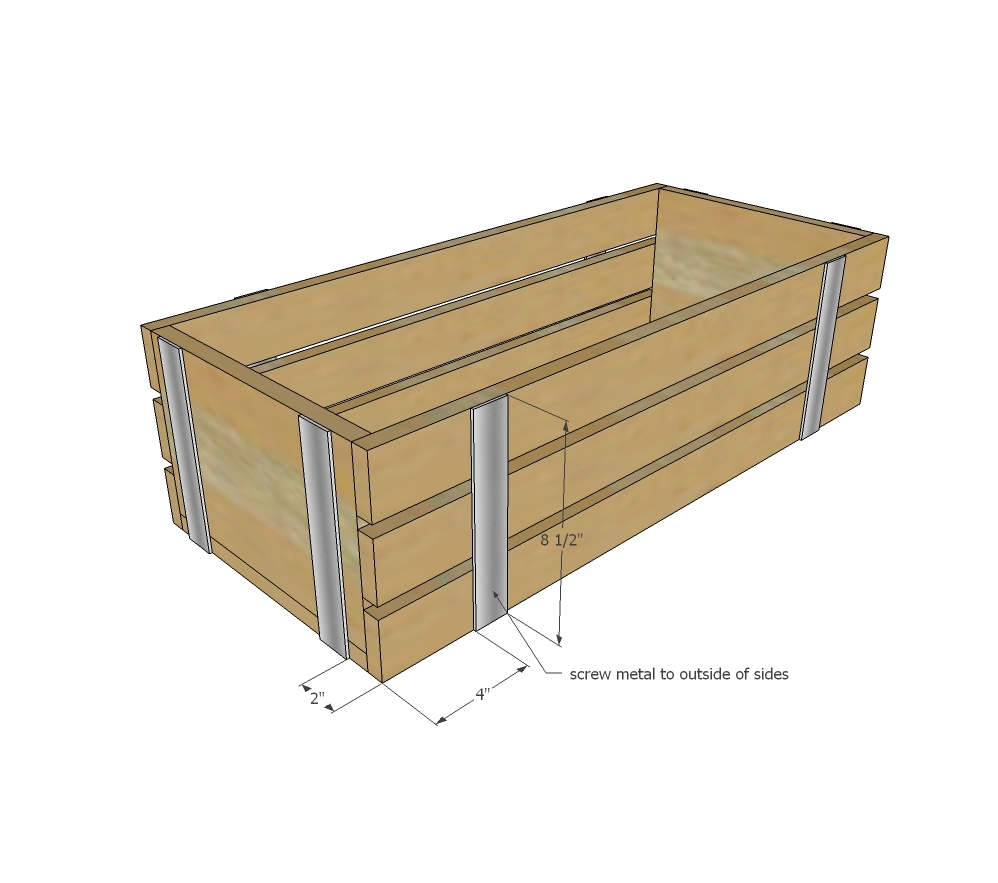
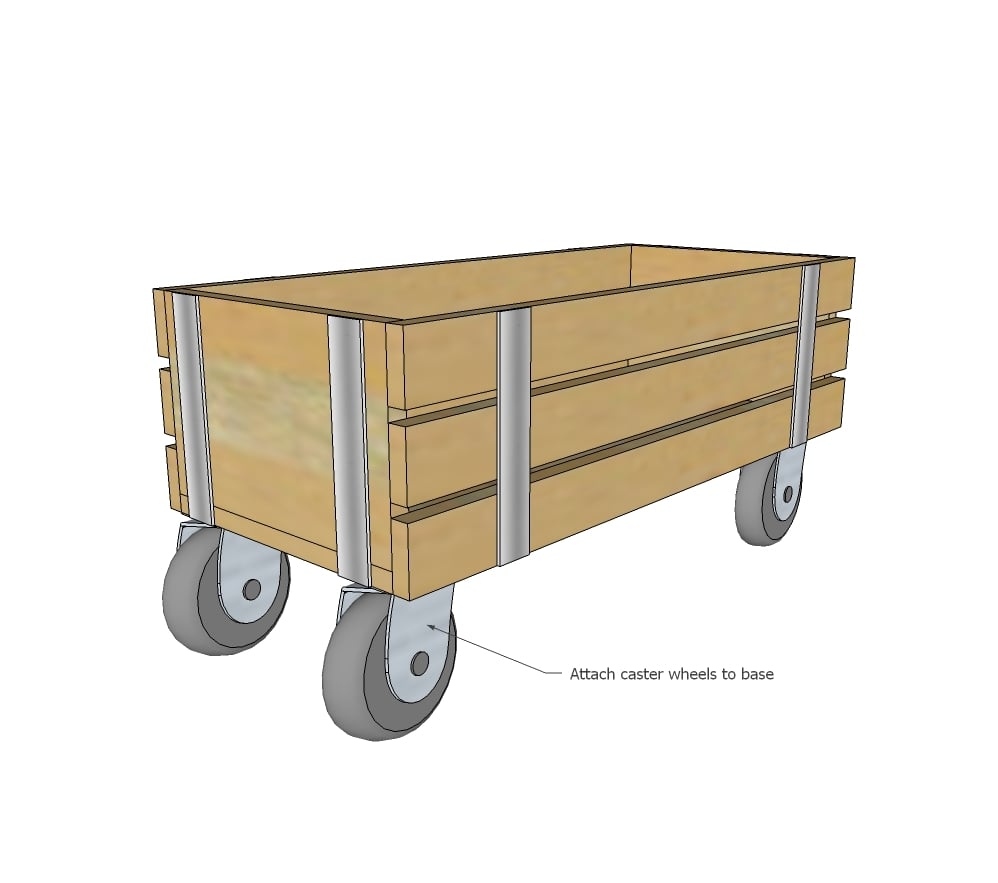
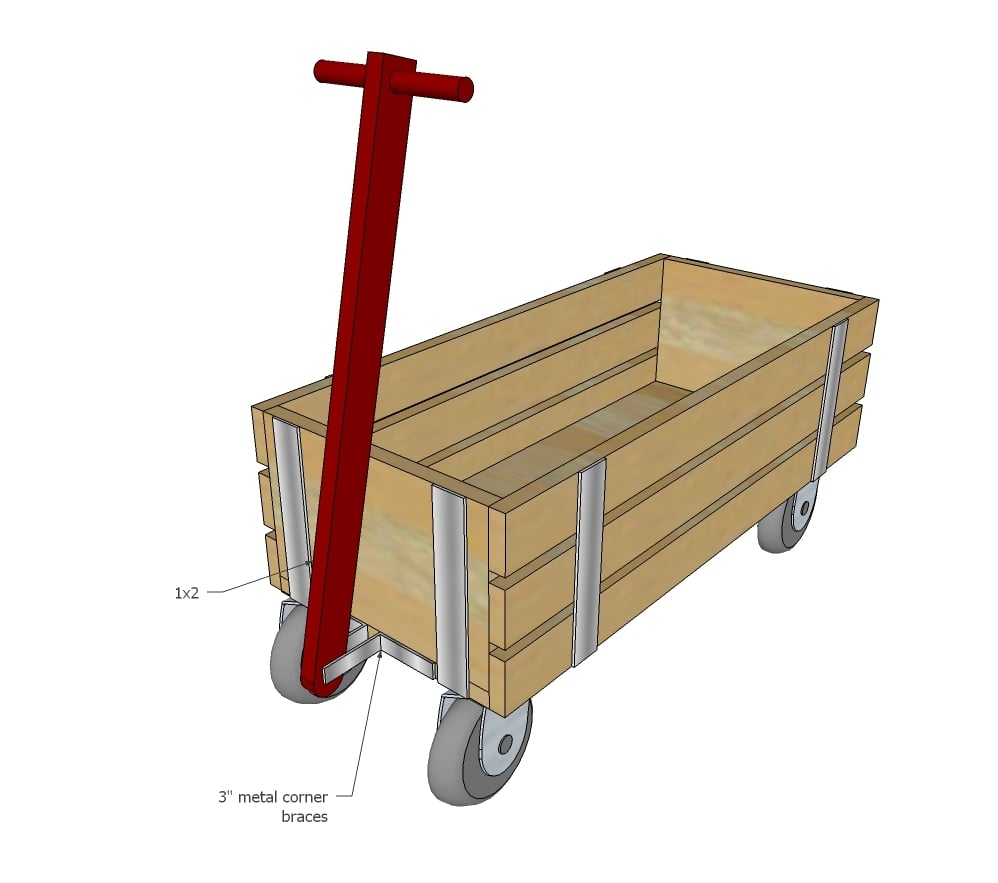

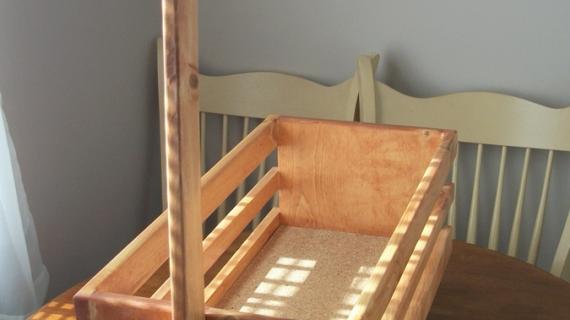
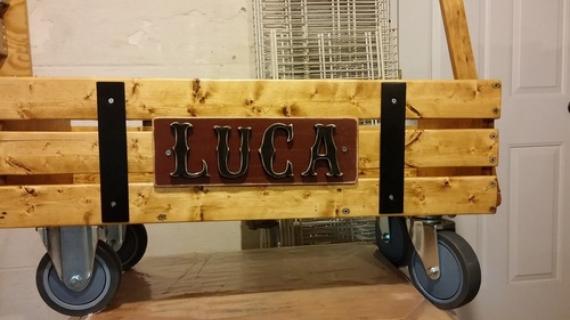

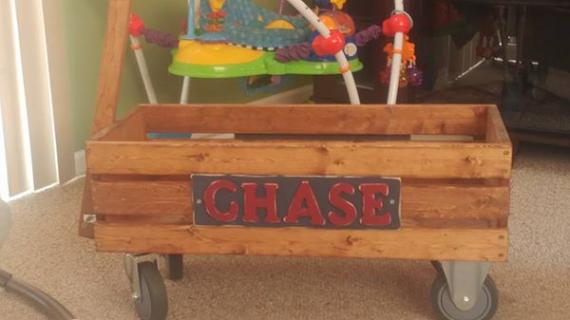
Comments
BuLLdoGG
Thu, 12/04/2014 - 07:41
Another gr8 plan thanks
Another gr8 plan thanks
lovelifesewcrazy
Mon, 12/08/2014 - 16:22
?
how much weight can this handle?
Nicorae_24
Mon, 05/11/2015 - 09:00
So Cute!
I can see this as a wedding present or wedding decor. :)
Rudena
Sun, 11/29/2015 - 11:48
Paint type
What kind of paint is suggested to use along with polyacrylic?
beachbaby62
Thu, 04/08/2021 - 13:43
Wagon-attaching handle
How do you attach the L brackets and pin on the handle-there are no instructions above!